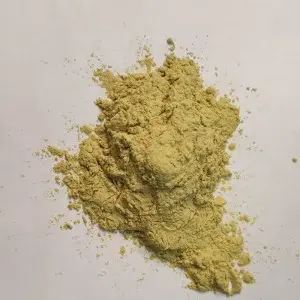Nov . 14, 2024 15:40 Back to list
buy mango fruit protection bags
The Importance of Buying Mango Fruit Protection Bags
Mangoes are among the most popular and beloved fruits globally, celebrated for their sweet, juicy flesh and vibrant flavor. However, as delightful as they are, mangoes are also susceptible to various threats in their journey from the tree to the consumer's table. One effective solution to ensure the delivery of high-quality mangoes is the use of fruit protection bags. In this article, we will explore the significance of buying mango fruit protection bags, highlighting their benefits and the key features to consider.
What Are Mango Fruit Protection Bags?
Mango fruit protection bags are specially designed coverings that protect mangoes from external factors that could compromise their quality. These bags are typically made from breathable materials that allow for air circulation while acting as a barrier against pests, diseases, and physical damage. The use of these bags has gained traction among mango growers and distributors as a means to enhance the overall quality of the fruit.
Benefits of Using Mango Fruit Protection Bags
1. Pest Control One of the foremost challenges in mango cultivation is the threat posed by pests such as fruit flies and various insects. These pests can cause significant damage to the fruit, resulting in economic losses for farmers. Using protection bags helps to create a physical barrier that prevents pests from reaching the mangoes, thereby reducing the need for chemical pesticides and promoting a more organic approach to farming.
2. Disease Prevention Mangoes are vulnerable to several diseases, including fungal and bacterial infections. The use of protection bags can reduce the likelihood of disease transmission, as they shield the fruit from contaminated soil and splashes from diseases present in the environment.
3. Minimizing Physical Damage During the growing season, mangoes are at risk of being bruised or damaged due to environmental factors such as wind, rain, or hail. Protection bags help to cushion the fruits against such impacts, ensuring they remain intact until harvest and distribution.
4. Improved Appearance and Quality Mangoes that have been protected with these bags often present better quality when packaged and sold. The bags help in maintaining the fruit's color and texture, resulting in a more appealing product for consumers. This visual appeal can play a crucial role in the marketing and selling of mangoes in competitive markets.
buy mango fruit protection bags

5. Environmentally Friendly Options Many manufacturers now offer biodegradable or recyclable protection bags, making them an environmentally friendly choice for mango cultivation. By choosing sustainable options, farmers can reduce their carbon footprint and contribute positively to the environment.
Key Features to Look for in Mango Fruit Protection Bags
When purchasing mango fruit protection bags, several key features should be considered
- Material Look for bags made from breathable, biodegradable materials that provide adequate protection while allowing air circulation. This ensures that the mangoes can ripen correctly without developing mold or rot.
- Size Choose bags that are appropriately sized for the mango variety you are growing. A well-fitted bag will effectively protect the fruit while allowing space for growth.
- UV Protection Some bags offer UV protection, which can be beneficial in regions with intense sunlight. This feature helps prevent sunburn on the fruit, ensuring it retains its quality.
- Ease of Use Consider bags that are easy to apply and remove. This is particularly important during the harvesting process, where efficiency is key.
Conclusion
In conclusion, investing in mango fruit protection bags is a wise decision for anyone involved in mango cultivation or distribution. The advantages of using these bags—ranging from pest and disease prevention to improving the overall quality of the fruit—cannot be overstated. As the demand for high-quality mangoes continues to rise, growers must adopt innovative practices to meet consumer expectations. By incorporating fruit protection bags into their farming strategy, mango producers can enhance the quality of their harvest, reduce losses, and ultimately achieve a more profitable venture. As consumers, appreciating these efforts not only leads to a better purchase experience but also supports sustainable agricultural practices.
-
Artificial Pollination Solutions for All Plant Pollen Types
NewsJul.29,2025
-
Premium Plant Pollen for Pure Pollination & Pollen Block Solutions
NewsJul.29,2025
-
Artificial Pollination Solutions for Efficient Crop Yields
NewsJul.28,2025
-
Premium Cherry Pollen for Pure Pollination & Different Types of Pollen
NewsJul.28,2025
-
Eco-friendly Fruit Paper Bags with Pollen Block Technology
NewsJul.26,2025
-
Premium Kiwi Pollen for Sale – Fresh Male Kiwi Pollen Supplier
NewsJul.25,2025